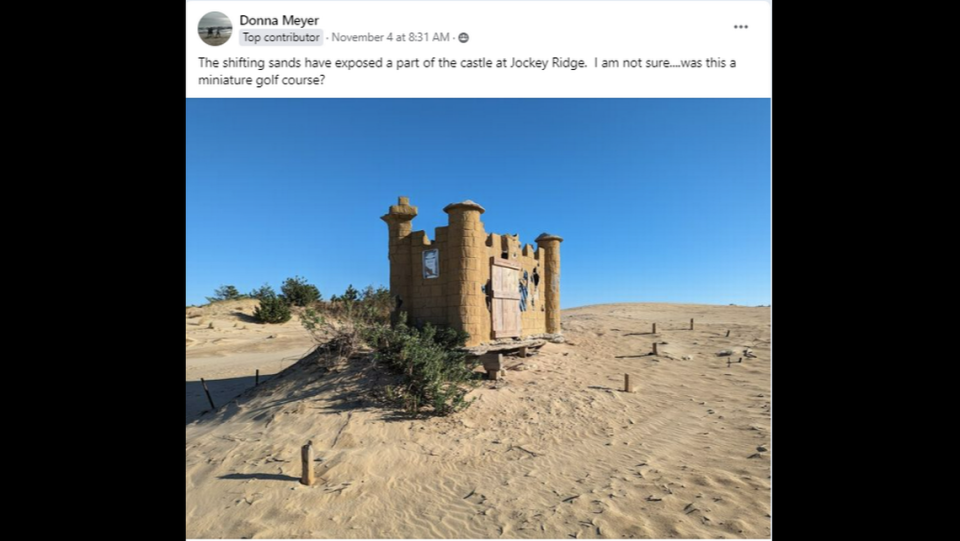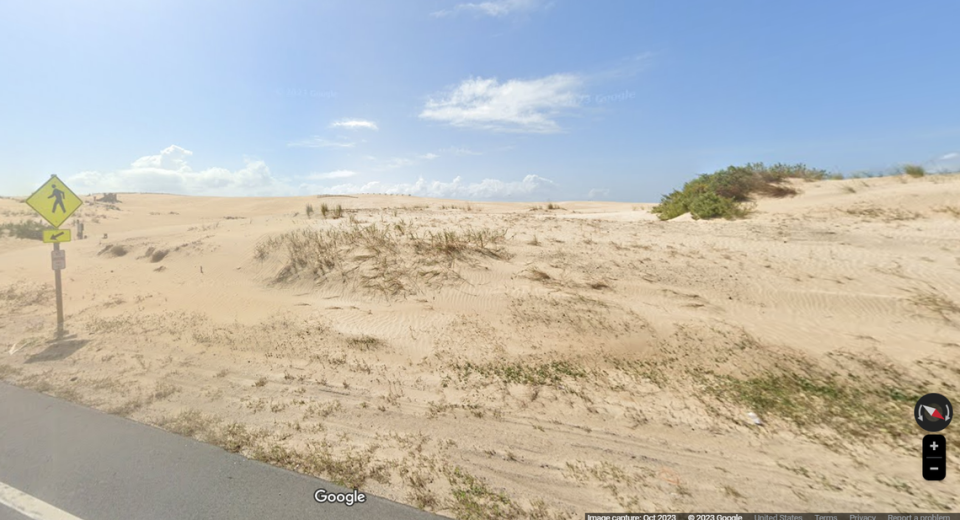Castle emerges from sand dunes at park in NC’s Outer Banks. How did it get there?
An honest-to-goodness castle has been photographed sticking out of a dune on the Outer Banks, and North Carolina state parks officials say it’s not a Photoshop prank.
There is a castle buried at Jockey’s Ridge State Park in Nags Head and half of it — 10 to 15 feet — has emerged due to shifting sands, according to park superintendent Joy Greenwood.
It’s suspected another 15 feet could still be buried, hinting additional shifts in the dune could expose an oddity not seen in decades.
So how did a castle end up on the Outer Banks?
“The castle is part of an old miniature golf course that operated from 1979-1987/88. I actually played on it!” Greenwood told McClatchy News in an email.

The course “was acquired by the state after the owner was frustrated by the amount of sand covering the course each year. ... She was in negotiations with a local contractor to remove the sand, but the state got involved to keep the sand in the park.”
It has been 35 years since the park system bought the 3.11 acres and allowed nature to take its course on the course.
As a result, parts of the course are buried 30 to 40 feet under sand, Greenwood says.
The castle sits close to the crosswalk off 158 Bypass and is the only golf course structure known to survive inside park boundaries. (Most were carted away by a church, only to end up destroyed in a fire, officials say.)

“Depending on storms, more or less is exposed. Presently it is more exposed than it has been in a very long time: Probably 15+ years,” Greenwood says. “The sand is being depleted from the north side and moving to (the) south. Enough of this sand has moved to not replenish the sand around the castle.”
Questions about the castle’s origins began surfacing in early November, when photos appeared on Facebook pages devoted to the Outer Banks.
“How did we miss this,” Charlene Miller posted on Facebook.
“Looks like something from a movie!” Renay Van Horn Smith wrote.
Among those who have shared images of the castle is professional photographer Wes Snyder, who is known for focusing on Outer Banks settings. He says he has long known about the castle and has watched with interest as more and more has been revealed.
“It’s a really cool piece of Outer Banks history,” Snyder told McClatchy News. “It’s not like anything else in the Outer Banks and the background setting of Jockeys Ridge Sand Dune just makes it that much more mystical looking.”
Jockey’s Ridge State Park has no plans to remove the castle, but does caution visitors to treat it like an artifact: Look, but don’t touch.
“It has metal parts that are exposed. The staff diligently tries to keep it as safe as possible, but it requires visitors do their part and take personal responsibility — have a healthy respect and not climb, remove or damage the artifact,” Greenwood says.
Jockey’s Ridge State Park, about 200 miles east of Raleigh, is “home to the tallest living sand dune system on the Atlantic coast,” the state park system reports. It is also the eastern terminus of North Carolina’s Mountains-to-Sea Trail.
Sailboat sinks off Outer Banks and is quickly buried by shifting sands, NC photos show
Parts of secretive US Cold War site revealed by storm erosion, Outer Banks park says
$400,000 home is the latest to collapse into the ocean on North Carolina Outer Banks


